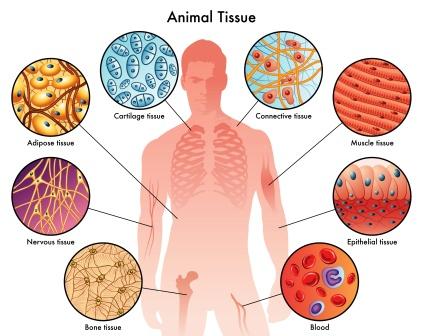Dhatugata Avastha of A Disease
By Dr Raghuram Y.S. MD (Ay) & Dr Manasa, B.A.M.S
Dhatugata Avastha is one of the stages of the disease. This is a stage wherein the disease gets seated in one or more tissues. This subsequently leads to the manifestation of the symptoms related to tissues afflicted by the disease along with the symptoms of the disease. Dhatu = tissue, Gata = gone, enter, seated, Avastha = stage
Read – Dhatu – 7 Body Tissues As Explained In Ayurveda

Dhatugata Avastha also reflects that the disease –
- Has gone deeper into the tissues
- Might damage the tissue in which it is seated
- Might produce symptoms of damage of that tissues in which it gets seated
- Is spreading in nature and might afflict the other tissues also in future
- Might get into a condition wherein the prognosis might get difficult (disease might become incurable or difficult to manage)
- Might afflict the immunity and endurance of the tissues specifically and the person as a whole
- Might get into a condition wherein it might need stronger interventions like tikshna shodhana followed by Rasayanas i.e. immune modulators and tissue rejuvenators
- Might require a longer course of treatment
Read – Shat Kriya Kala – ‘Stage-Wise Disease Management’
Does dosha dushya sammurchana take place in the dhatugata avastha?
Dosha Dushya Sammurchana means amalgamation of aggravated dosha and susceptible (weaker) tissue. This amalgamation is mandatory for the manifestation of any disease. When this process starts following the lodgment of aggravated dosha in the tissue, premonitory symptoms of the disease are manifested. When the amalgamation completes the disease is manifested in its full blown form. Here the signs and symptoms of the disease are manifested.
Dhatugata Avastha occurs when the disease formed due to this amalgamation continues to stay in the tissues and also spread to the other tissues. As such the damage to the tissue is caused by the aggravated causal dosha, the disease formed as a result of this amalgamation further damages the tissue. In a way, the same dosha dushya sammurchana which causes the disease pathogenesis is also responsible for the dhatugata avastha. Dhatugatha Avastha can be considered as the continued stage of sthanasamshraya and vyakta stages of the kriya kala.
Read – Relationship between Samprapti and Shat Kriya Kala
Table of Contents
Sthana Samshraya, Dhatugata Avastha
Dosha Dushya Sammurchana / Sthana Samshraya is when the aggravated dosha gets lodged in the tissue, gets amalgamated and sets in the pathogenesis of the concerned disease.
Dhatugata Avastha is when the disease formed by such an amalgamation further damages the related and unrelated tissues and may also spread to involve other tissues of the body.
Dhatugata Avastha – References
Dhatugata Avastha stage of the diseases has not been explained in relation to each and every disease. But it might be applied to the other diseases as well. The diseases in which this stage has been specifically mentioned may be those diseases in which the dhatugata avastha definitely takes place if treatment of the disease is not done properly. In other disease it might or might not occur and even if it occurs it might not be of severe intensity in comparison to those diseases in which this stage has been mentioned. The prognosis also might be good and treatment may yield good results in such diseases (wherein this stage has not been mentioned but still the stage manifests in a lesser severe form).
Read – Charaka – Jwara Chikitsa 3rd Chapter
Dhatugata Avasthas are explained in the below mentioned diseases (classical references) –
- Jwara – fever
- Kushta – skin disorders
- Vatarakta – gout
- Masurika – small pox
As already said, this condition may occur in any disease. When it occurs, the signs and symptoms of such a disease will be more severe, especially so when the disease gets seated in deeper tissues i.e. bones, bone marrow and semen tissues.
Sometimes the dhatugata avastha of some diseases have been described as separate diseases. Example – the dhatugata stage of amlapitta (gastritis, acid peptic disorders) is described in the name of ‘parinama shula’ – peptic (duodenal ulcers) ulcers. We need to see that parinama shula is not described amongst the types of shula (abdominal pain, colic) and are variants of the same. When amlapitta gets chronic and severe and afflicts (gets seated and rooted in) tissues like muscles of the stomach and small intestine it would be called as parinama shula.
Read – Amlapitta – Meaning, Symptoms, Types, Prognosis
Treatment – Dhatugata stage of diseases
The treatment of dhatugata stage of diseases will be the same as the disease which gets localized in that tissue. Example – Mamsagata Jwara i.e. fever located in the muscles shall be treated on the lines of ‘treatment of fever’ but the treatments shall be vigorous, stronger and for prolonged duration. The strength of the disease and diseased shall be considered before treating these conditions. A prolonged course of Rasayana therapy might be needed after the disease has been comprehensively dealt with. This is to strengthen the tissues, to enhance tissue immunity and to prevent the recurrence of the disease.
Click to Consult Dr Raghuram Y.S. MD (Ayu) – Skype







